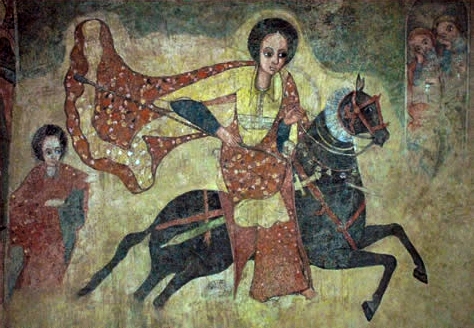 |
| A simplistic example of the bass on the down beat with the chords of the guitar on the off beat |
it conveys struggle by not conveying struggle, and rather expressing elements of freedom. Jazz came out of oppressed people in the 1920s, African Americans who were prejudiced against. They created Jazz, and I think that if you ask just about any Jazz musician what Jazz is they will say, "It's freedom." Now Reggae is not freedom in the same sense that Jazz is, in the way Jazz has an improvisational element and often lose structure. Reggae has a rhythm that has a happy feel with its off beat chords on the guitar and bass notes on the down beat. Often this beat as altered and made a little more funky, giving it a more appealing sound. In some songs, like Bob Marley's "One Love," this happy feeling is kept a live though out the song, with a melody in a major key and a pretty straight forward beat. Although some of his more powerful songs like "Exodus," it is in a minor key with a more complex rhythm–although while still staying true to the off beat idea. The bass line of the song "Exodus" has very empowering sound, and wants keep pushing along and moving forward. And This fits with the theme of the song; a "movement of Jah's people" to the promised land.
 |
| Bass line from "Exodus" |
All the elements described above in combination with good instrumentation and the raspy yet flowing voice of great reggae singers like Bob Marley, you have beautiful music which, wether you are Rastafarian or not, sets your mind free. Now I only really covered a few songs, but I think it is interesting and important to look at not only how a music came about and what it conveys, but also how it is conveyed. How the music itself conveys messages and emotions in nature of what the instruments are doing individually to make the whole sound.








